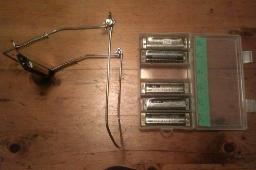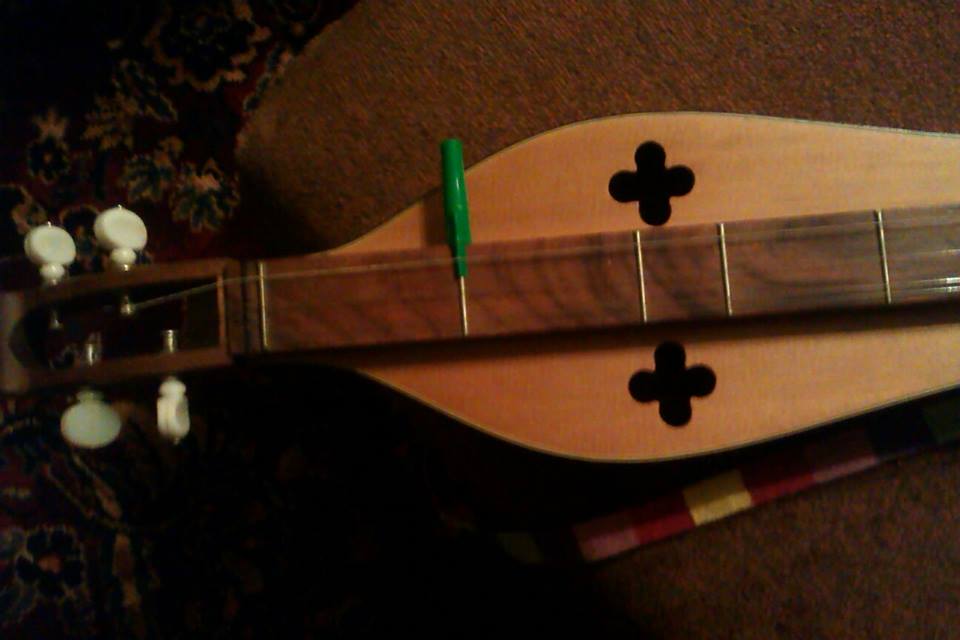Thoughts on Harmonicas
Adventures with 'other' instruments...
And if you have a rack, it should be perfectly legal to play while driving. In Canada, at least, hands free devices are legal. I'm not sure the police would agree.
A couple of folks mentioned Chromatics. Toots Thielemans, the master of the chromatic harp passed away today (August 22, 2016) in his early nineties. Here's a clip of Toots playing his most famous composition, Bluesette. Part way through he is surprised by another master of the chromatic harp, Stevie Wonder.
I bought a chromatic in the mid-sixties after hearing Toots, but it has not received much attention.
A friend of ours and a mentor to both of my sons, the late Willie P. Bennett was the best rack player I've ever heard or played with. Here's the last song I ever heard Willie play:
Willie plays Stardust
One of our neighbours, Carlos Del Junco is one of Canada's (and the world's I'd guess) best mouth harp players. He sometimes sits in with our jug band. Here he is with our fiddle player, Jim Bowskill, playing guitar (Jim is a master of many instruments).
Jimmy Bowskill & Carlos Del Junco

 Terry again, I have a plastic box that I bought at Canadian Tire (a Canuck hardware store). It was meant to store small parts, but it fits six 10 hole diatonic mouth harps perfectly and fits in a guitar or banjo case easily. The old Elton rack is one I bought in the early sixties and the only modifications are a bend to make it hit my mouth squarely and a couple of lock washers. I also have a drawer full of harps that I never use, but these six get played pretty regularly.
Terry again, I have a plastic box that I bought at Canadian Tire (a Canuck hardware store). It was meant to store small parts, but it fits six 10 hole diatonic mouth harps perfectly and fits in a guitar or banjo case easily. The old Elton rack is one I bought in the early sixties and the only modifications are a bend to make it hit my mouth squarely and a couple of lock washers. I also have a drawer full of harps that I never use, but these six get played pretty regularly.




 . It's still my favourite dulcimer capo.
. It's still my favourite dulcimer capo. This is a Marine Band Special in C that was given to me by my ex-father-in-law. It's a 12 hole diatonic with a wooden comb.
This is a Marine Band Special in C that was given to me by my ex-father-in-law. It's a 12 hole diatonic with a wooden comb. This is a 10 hole Hohner Echo Super Vamper in A that I bought in Scotland circa 1969 when my Marine Band in A crapped out. It's identical to the Marine Band except for the top cover plate. I haven't been to the British Isles in many years and am not sure if these are still available over there. Perhaps they now sell Marine Bands over there.
This is a 10 hole Hohner Echo Super Vamper in A that I bought in Scotland circa 1969 when my Marine Band in A crapped out. It's identical to the Marine Band except for the top cover plate. I haven't been to the British Isles in many years and am not sure if these are still available over there. Perhaps they now sell Marine Bands over there.
 This plastic parts box was bought at Canadian Tire. It jst happened to fit six harps perfectly and fits in a guitar case. The Elton harp rack is one that I bought in the early sixties, right after I first saw Jimmy Reed. The only modifications I've made is lock washers and a bend in the frame so that it hit my mouth at the proper angle.
This plastic parts box was bought at Canadian Tire. It jst happened to fit six harps perfectly and fits in a guitar case. The Elton harp rack is one that I bought in the early sixties, right after I first saw Jimmy Reed. The only modifications I've made is lock washers and a bend in the frame so that it hit my mouth at the proper angle.
 These are my dulcimer capos. The elastic band/chopstick capo has been in use for over 30 years with occasional replacement elastics, but the same chopstick.
These are my dulcimer capos. The elastic band/chopstick capo has been in use for over 30 years with occasional replacement elastics, but the same chopstick.